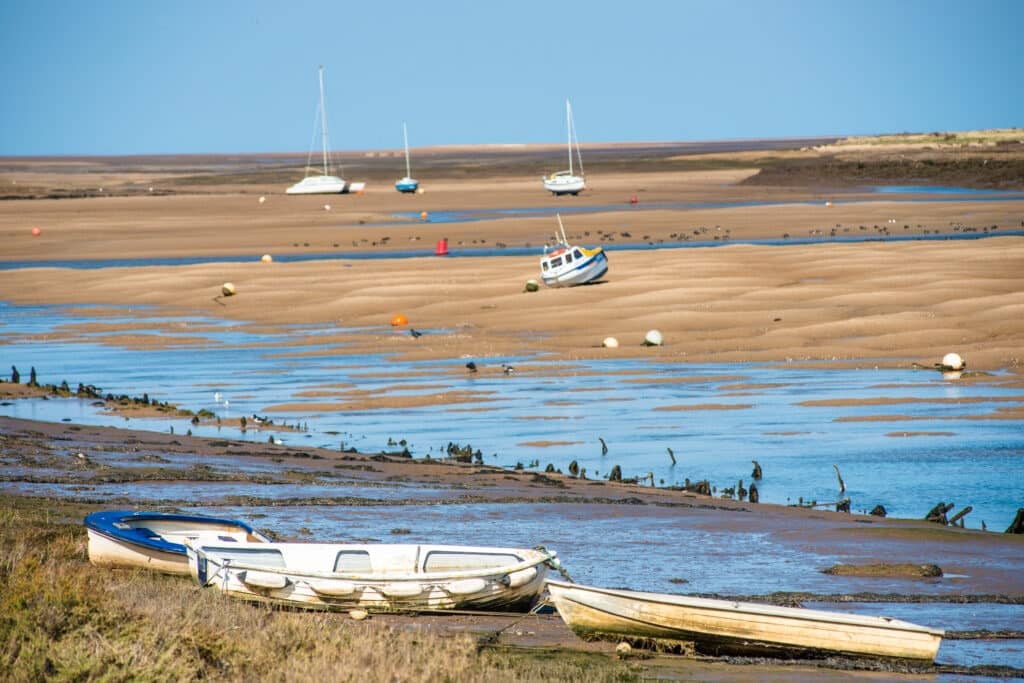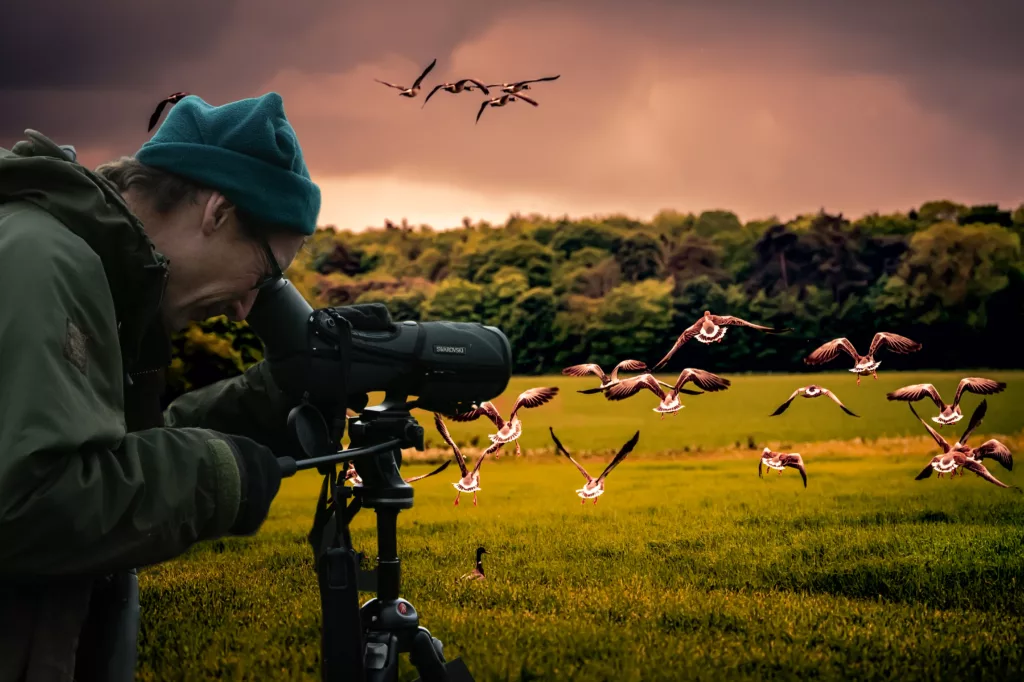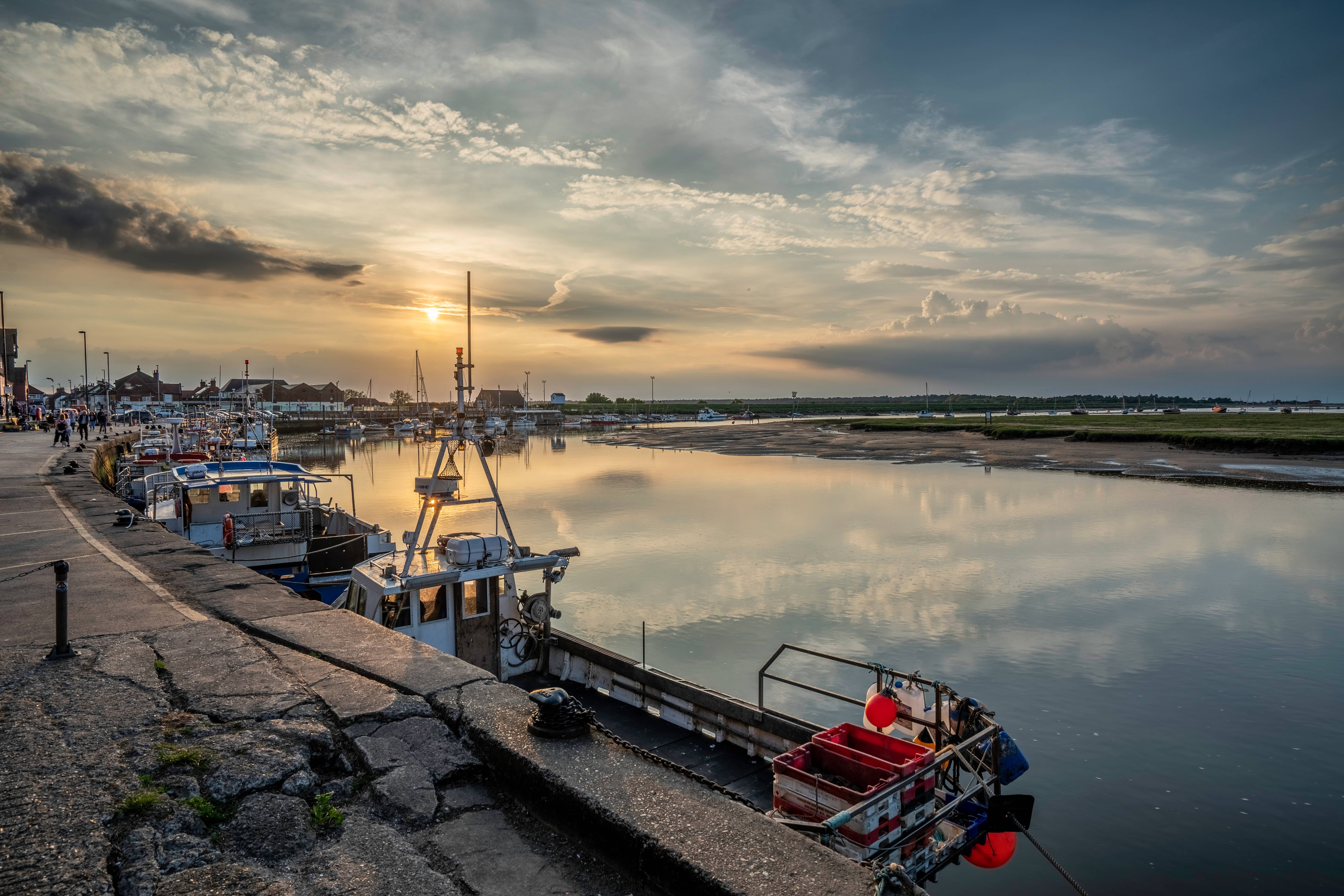
Dawn Flight
It’s bitterly cold. Yet January is an excellent time to head outside and witness one of Britain’s most magnificent dawn experiences. Huddle in the shelter of sand dunes or a Wells beach hut. And wait.
Light glimmers in the east. Day is breaking and with it, an awakening. Ragged cries spike the dark silence. Slowly, quietly it begins. Excitement mounts in rousing crescendos, spreading among thousands of wildfowl, restless on the cold mud.
And then they rise. A wild chorus fills the air, elemental and unrelenting. Thousands of pink footed geese lift almost as one continuous wave of breathtaking joy. Great skeins make V patterns overhead, calling all the while, formations shaping the fading dark. Over the watchers they fly inland, hungry from their night fast, searching for sugar beet tops in newly harvested fields.
In the not too distant past, wildfowlers lined up here, guns loaded to shoot the birds down. Professional wildfowling guides were a cutthroat bunch, guarding their secret shooting locations well. Around this time, Sir Peter Scott, son of the polar explorer Robert Falcon Scott, wrote his book Morning Flight, describing being here as a pilgrimage. His love of such glorious natural spectacle surely informed his work as a conservationist. He established the Wildfowl and Wetlands Trust (WWT) in 1946 and later co-founded the World Wildlife Fund.
And so, morning has come and the geese are off to find breakfast. Time you head back to the warmth of Wells and do the same!

Wild Goose Chase
The haunting cry of visiting Pinkfoot Geese is the sound of a Norfolk winter. Immerse yourself in their world surrounded by Norfolk’s spectacular salt marsh. To find the lonely lagoons, you need a boat guided by the Coastal Exploration Company’s first class sailors who know the secrets of these hidden channels.
Carried by the flow of tides there’s no rush, you’re held by natural rhythms. When the waters are static, before the tide turns, you’ll stop for hot soup. Listen. All around you marram grass shivers in the wind and rare bird calls unspool over the shimmering salt marsh. Smell the mud’s fresh mineral tang and feel Norfolk’s good food warming you from the inside out. You might be enjoying artisan sourdough, cheeses, home-baked pies or cakes, all sustainably sourced and locally made.
This unique part the world is one of the UK’s last true wildernesses. Wind drives clouds across the sky and white wing feathers catch the light, shifting your focus from the distant horizon to small birds at home over a vast sea.
You’ll depart at the very start of the tide from the East Quay at Wells, as the sea flows into the salt marsh. The journey lasts between 3-4 hours, in a traditional 1960s wooden mussel flat travelling under sail and oar through the protected north Norfolk creeks, or by crab or whelk boat if the tide is very high. You’ll return on the outgoing tide, brought safely back to the Wells pontoon.

Return of the Geese
The sight of pink foot geese taking flight at dawn is one of nature’s most magnificent winter spectacles. But if prising yourself from bed on a frosty morning is just too painful, you can still witness the geese returning to their roosting grounds as the light fades to dusk. Numbers have been increasing over the last 50 years, with upwards of 100,000 now wintering in Norfolk.
During the day the geese are scattered across the Norfolk fields, shy and hard to spot, moving in grey clusters over the muddy land where they grub for sugar beet tops, searching for root crops rich in carbohydrates. But at the end of an autumn or winter afternoon, try waiting on Lady Anne’s Drive at Holkham. Watch the landward horizon, for this is where they’ll appear. Listen for their calls, piercing the leaden sky until a faint V-shaped skein comes into view. Keep your eyes on it until you see a multitude, fluctuating as formations take turns to lead the flocks.
The skies grow loud and shapes become sharper as they close the distance towards you, arriving in waves. The air is alive with noise, a rowdy hubbub of gathering geese. It’s a little like a starling murmuration, except these birds are almost as big as swans. Then they drop onto the marsh, hoards from the Icelandic Highlands plunging in wheeling spirals. They land. And suddenly it’s silent. You’ve witnessed something truly extraordinary. Now…time to find a nice warm pub!

Fresh From the Sea
The small working harbour at Wells-Next-The-Sea has stunning views over shining mud creeks, shifting sand and wild saltmarsh. In winter inky black Brent geese fly low over the reeds and the masts of huddled dinghies, wrapped in their winter coats, clatter in the salty wind. Look out for the ‘Lifeboat Horse’ created by artist Rachel Long to honour the heroic horses who pulled lifeboats to the sea during the 1800s. The quiet winter season is a magical time to explore the narrow sheltered streets winding up from the blustery quayside.
If heavy weather rolls in, cosy up at Wells Maltings on Staithe Street. It features a state-of-the-art theatre, cinema, fabulous café, Heritage Centre, Visitor Information Centre, modern art gallery and spaces for community classes and events. With such a vibrant arts scene you’ll hope it rains again tomorrow! Don’t miss the giant whelk sculpture, which brings us to shellfish.
For thousands of years cold water currents have swept nutrients from Norway, resulting in a rich variety of seafood along the Norfolk coast. October to March, the cold weather season, is when the town’s mussel beds are seeded, ready to be harvested after 2.5 years. It’s hard work, but dedication and passion ensure Norfolk’s world class seafood. Wells has plenty of places to seek out these winter feasts from the sea. Try the Wells Crab House, Nelson’s Coffee House, Sands, Ollie’s, and Season. Where do they get their ingredients? All fresh from the sea!
Build your own itinerary
If you fancy creating your own itinerary for a day trip to Norfolk or a longer visit, it couldn’t be simpler. Just go to Search Activities and select from our wide range of free and paid-for experiences, saving any that capture your imagination with the click of a button.
Once you’ve finished, you’ll find all the information stored in My Favourite, where you can drag and drop activities to create your own day-by-day itinerary! You can download this to a calendar and even share it with friends.
